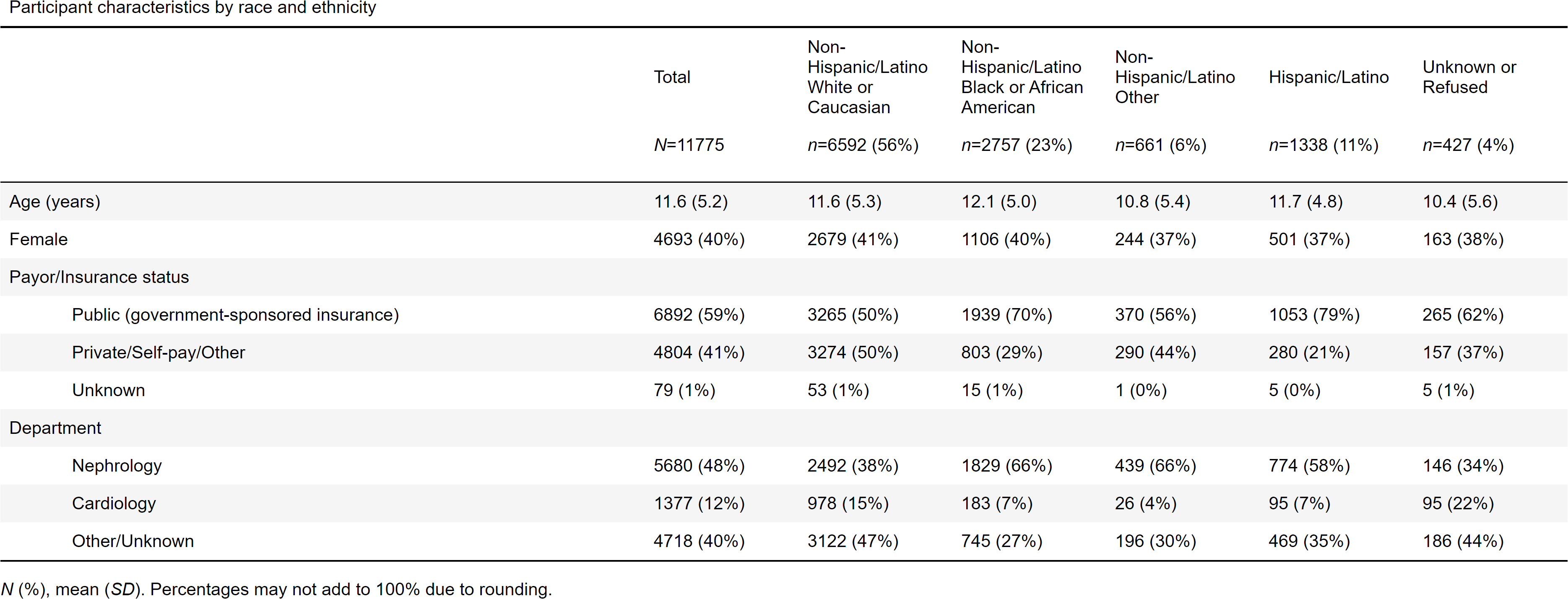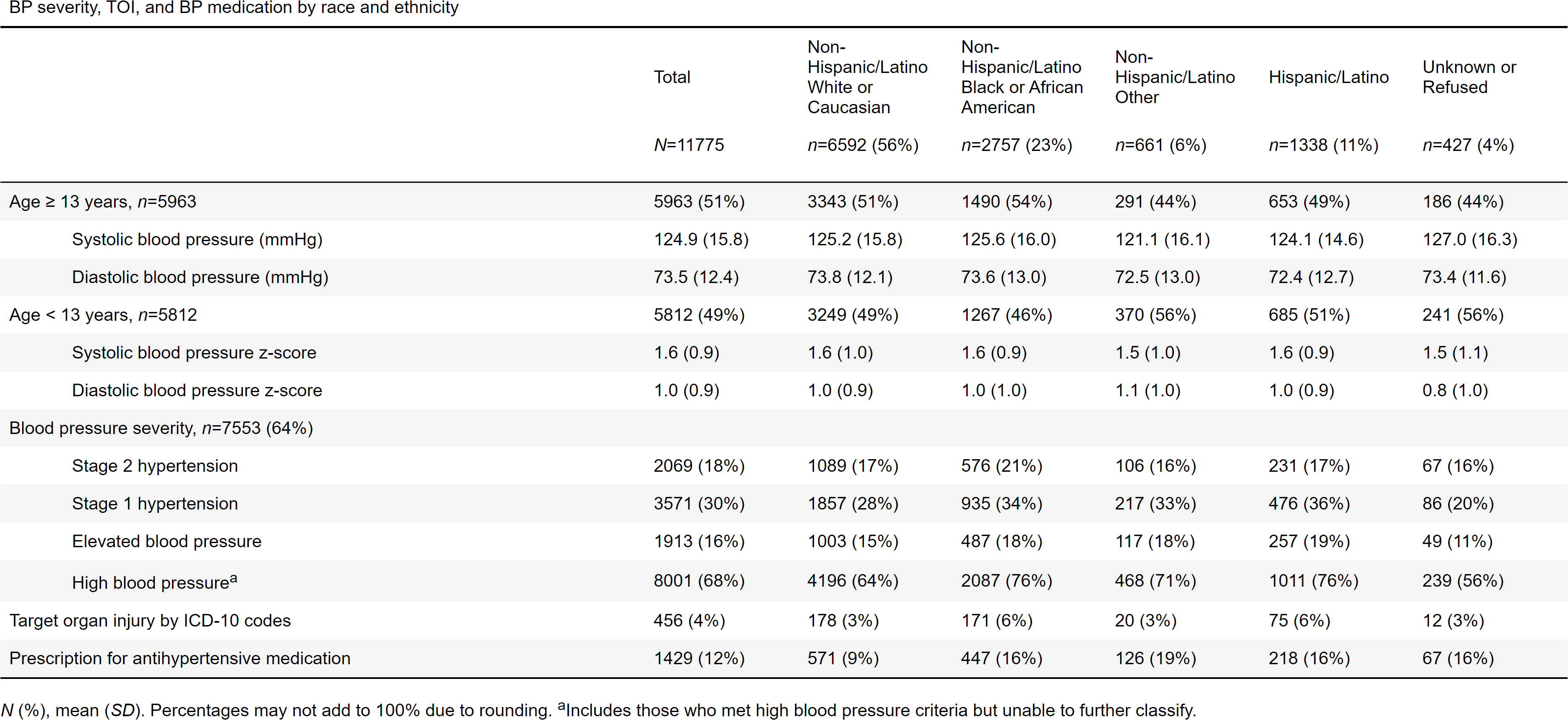Hypertension
Hypertension 1
15 - Racial and Ethnic Variation in Youth-Onset Hypertension Severity, Target Organ Injury, and Initial Management: A SUPERHERO Interim Analysis
Publication Number: 15.321
.jpg)
Victoria Giammattei, BA (she/her/hers)
Medical Student, Year 4
Wake Forest School of Medicine of Wake Forest Baptist Medical Center
Winston-Salem, North Carolina, United States
Presenting Author(s)
Background: Adults with hypertension (HTN) have racial and ethnic heterogeneity in blood pressure (BP) severity, target organ injury (TOI), and treatment, but the extent to which this exists in youth with HTN remains poorly understood. Rather than being ascribed inaccurately to biological effects, there remains a lack of understanding of how health and social disparities could account for these differences in youth.
Objective: To determine the differences in baseline BP severity, BP medication prescription, and TOI prevalence between racial and ethnic groups in youth with HTN disorders.
Design/Methods:
Interim analysis of baseline data from the Study of the Epidemiology of Pediatric Hypertension (SUPERHERO) Registry, an ongoing multisite retrospective cohort of youth referred to subspecialty care for HTN disorders. We obtained data from the electronic health record (EHR) at each site using standardized and validated methods. Inclusion criteria were initial clinic visit for ICD-10 code-identified HTN disorder from 1/1/2015 to 12/31/2021 and age < 19 years. Exclusion criteria were ICD-10 code-identified pregnancy, kidney failure on dialysis, or kidney transplant at the index visit. Our exposure was race/ethnicity as reported in the EHR. Outcomes were BP and corresponding z-scores and classification per national guidelines, BP medication prescription order, and heart- and kidney-specific TOI by ICD-10 codes. Data were analyzed using unadjusted generalized linear models and Welch two-sample t-test.
Results: Of 11,775 participants, mean age was 11.6 years (SD 5.2), 40% were female, 23% were Black or African American, and 11% were Hispanic or Latino. Hispanic or Latino youth had lower systolic and diastolic BP, though there was no difference in HTN severity risk. Hispanic or Latino youth also had lower risk of TOI (RR 0.48, 95% CI 0.37, 0.63) and were less likely to be prescribed a BP medication (RR 0.68, 95% CI 0.60,0.79) compared to non-Hispanic White youth.
Conclusion(s): Within our diverse cohort of youth with HTN disorders, we have demonstrated racial and ethnic variability in baseline BP, outcome measures, and treatment. While it is well documented that conditions such as HTN disproportionately affect minoritized racial and ethnic groups, these results must be interpreted carefully, specifically regarding how race and ethnicity are defined. The current analysis sets up our ongoing and planned future analyses that will investigate actual disparities in management with regards to race and ethnicity and differences in response to treatment across racial and ethnic groups.

